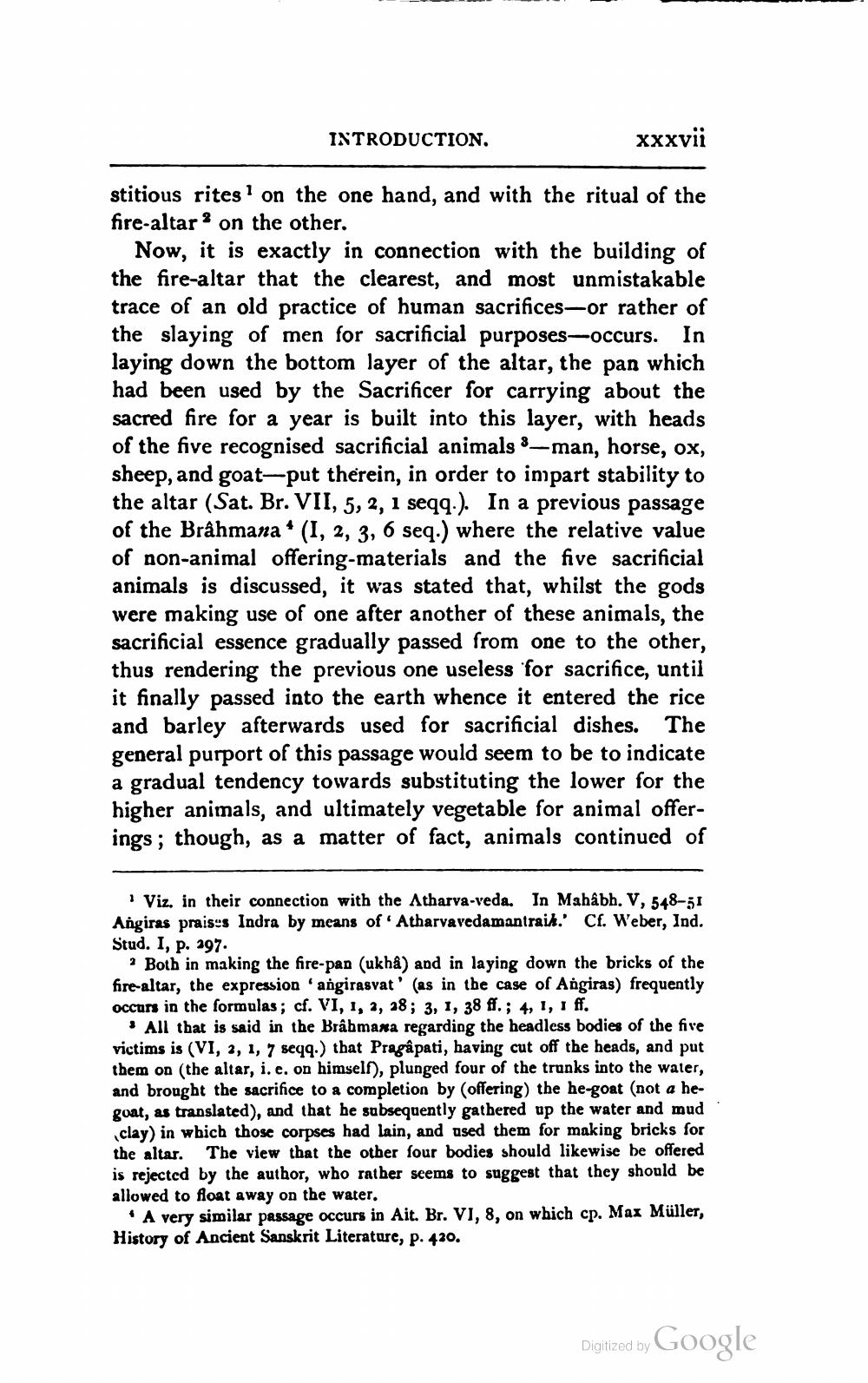________________
INTRODUCTION.
xxxvii
stitious rites on the one hand, and with the ritual of the fire-altar? on the other.
Now, it is exactly in connection with the building of the fire-altar that the clearest, and most unmistakable trace of an old practice of human sacrifices-or rather of the slaying of men for sacrificial purposes-occurs. In laying down the bottom layer of the altar, the pan which had been used by the Sacrificer for carrying about the sacred fire for a year is built into this layer, with heads of the five recognised sacrificial animals :-man, horse, ox, sheep, and goat-put therein, in order to impart stability to the altar (Sat. Br. VII, 5, 2, 1 seqq.). In a previous passage of the Brâhmana* (I, 2, 3, 6 seq.) where the relative value of non-animal offering-materials and the five sacrificial animals is discussed, it was stated that, whilst the gods were making use of one after another of these animals, the sacrificial essence gradually passed from one to the other, thus rendering the previous one useless for sacrifice, until it finally passed into the earth whence it entered the rice and barley afterwards used for sacrificial dishes. The general purport of this passage would seem to be to indicate a gradual tendency towards substituting the lower for the higher animals, and ultimately vegetable for animal offerings; though, as a matter of fact, animals continued of
· Viz, in their connection with the Atharva-veda. In Mahâbh. V, 548-51 Angiras praises Indra by means of Atharvavedamantraik.' Cf. Weber, Ind. Stud. I, p. 297.
Both in making the fire-pan (ukhå) and in laying down the bricks of the fire-altar, the expression 'angirasvat' (as in the case of Angiras) frequently occurs in the formulas; cf. VI, 1, 2, 38; 3, 1, 38 ff.; 4, 1, 1 ff.
All that is said in the Brabmana regarding the headless bodies of the five victims is (VI, 2, 1, 7 seqq.) that Pragâpati, having cut off the heads, and put them on (the altar, i.e. on himself), plunged four of the trunks into the water, and brought the sacrifice to a completion by offering) the he-goat (not a hegoat, as translated), and that he subsequently gathered up the water and mud clay) in which those corpses had lain, and used them for making bricks for the altar. The view that the other four bodies should likewise be offered is rejected by the author, who rather seems to suggest that they should be allowed to float away on the water.
A very similar passage occurs in Ait. Br. VI, 8, on which cp. Max Müller, History of Ancient Sanskrit Literature, p. 420.
Digitized by Google




